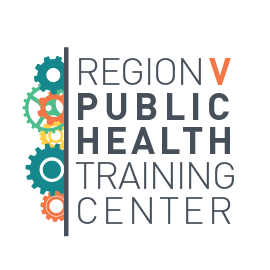By Sara Suisman, MPH, Iliana Enriquez, Fatma Yousif, Indiana Public Health Association
General Election Day is quickly approaching! Do you have a plan to cast your ballot?
According to Healthy People 2030, civic participation, which includes things like voting, volunteering, and engaging in group activities, are all linked to health benefits for participants. Specifically, voting allows individuals to impact decisions regarding their health, and it also fosters a greater sense of community and purpose. There is a clear feedback loop here: individuals who vote self-report better health than those who don’t, and when individuals feel healthier, they are more likely to vote and participate in their community (Health & Democracy Index). But what can we do to support our communities that aren’t voting and have worse health outcomes?
The Health & Democracy Index outlines connections between voter access, voter turnout, and various health metrics. For example, Indiana does not have inclusive registration options, such as automatic, same day, or election day voter registration. Additionally, Indiana requires proof of identity at the polls, despite eligibility being established during the registration process. Finally, Indiana does not allow no-excuse absentee voting. All these factors contribute to poorer voter access, which translates into lesser civic participation. In the 2020 general election, Indiana had a voter turnout rate of 62% and a voter registration rate of 69%. By comparison, about 66% of those eligible nationally voted in the 2020 presidential election (Pew Research Center). While the voter turnout rate in 2020 was the highest in over a century, Indiana still fell short of the national average and many of its neighboring states (Illinois, Michigan, Minnesota, Ohio, and Wisconsin) (Health & Democracy Index). Lastly, Indiana has worse overall health factors and outcomes than many other states, including higher rates of premature death, adult smoking, infant mortality, diabetes, and adult obesity as compared to the national average (County Health Rankings & Roadmaps). This reveals an opportunity for advocacy around policies and decisions that would improve voter access in Indiana, rather than restricting it, and thereby positively impacting Hoosier health.
Both individuals and organizations can also promote voter registration and participation, despite state-by-state challenges related to voter restrictions. The Indiana Public Health Association has created a “Vote for Health” webpage, which describes the connections between voting and health, and outlines key dates, resources, and action steps for individuals to participate in the upcoming General Election. We will be using our social media channels and e-newsletters to share voting reminders with IPHA members and partners leading up to General Election Day (November 5).
If you are interested in learning more, please visit IPHA’s Vote for Health webpage. IPHA intends to keep this webpage active year-round to continue the conversation regarding democracy and health even beyond this presidential election season.
Outside of Indiana? Visit Vote411.org to check your voter registration status and make a plan to cast your ballot.
To learn more, check out these resources:
- IPHA Vote for Health
- Healthy People 2030
- Healthy Democracy Healthy People
- Health & Democracy Index
- County Health Rankings & Roadmaps
- Congressional District Health Dashboard
- Vote 411

